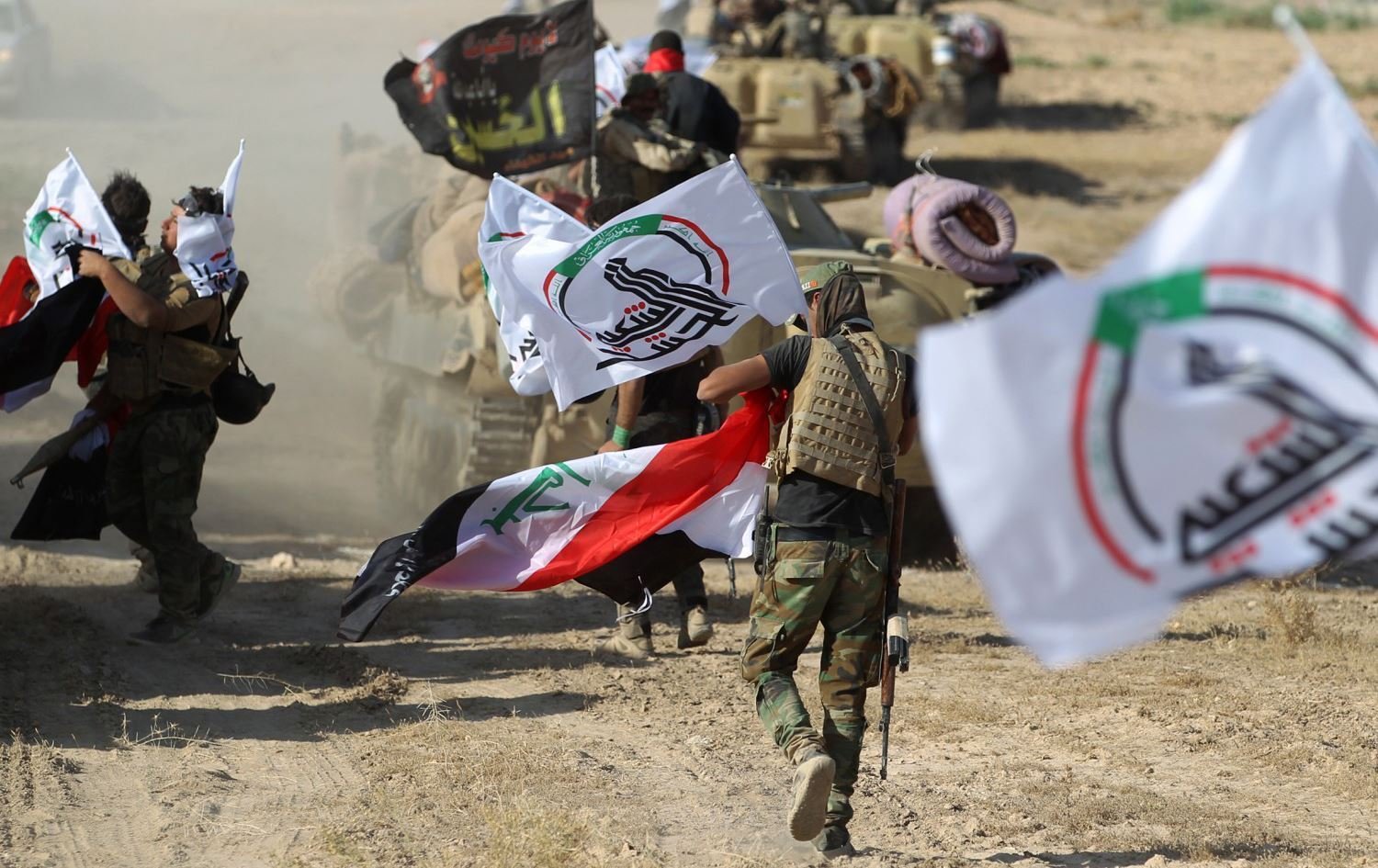U.S. Pressure Disrupts PMF Salaries, Deepens Iraq’s Pro-Iran Militia Dilemma

The salaries of Iraq’s Popular Mobilization Forces (PMF) for June have not been disbursed. While some lawmakers and figures close to the PMF initially cited a “technical issue” in the payment system, Maytham al-Zaidi—the head of the Abbas Combat Division, a PMF-affiliated unit—revealed the underlying cause: a formal warning from the U.S. Treasury Department to the payment company Qi Card, which prompted the company to withdraw and notify both Rafidain Bank and the PMF Commission of its decision.
Context: The United States’ entry into the PMF payroll file marks a new phase in Washington’s engagement with Iraq’s pro-Iran Shiite factions. The Treasury Department’s warning and the swift withdrawal of a key payment processor reveal that financial pressure tools are being used more directly—particularly in the aftermath of the recent 12-day Iran–Israel war.
Analysis: Despite official claims of a “technical issue,” al-Zaidi’s disclosure points to U.S. pressure as the real driver behind the disruption. In response to the collapse of the Key Card mechanism, Moeen al-Kadhimi, a senior Badr figure and a member of parliament’s finance committee, announced that salary payments will resume shortly through a new arrangement with Al-Nahrain Bank. However, as the issue persists, some sources indicate that salaries may instead be paid in cash. The PMF’s Financial and Administrative Directorate confirmed this shift, citing both the replacement of payment cards and the transfer of accounts from Rafidain Bank to Al-Nahrain Bank—developments widely interpreted as indirect confirmation that the payment company’s exit was forced by U.S. sanctions risk.
Popular Mobilization Forces (PMF) in Iraq
Budget and Personnel Analysis (2021-2025)
| Year | Budget Allocation ($) | Number of Beneficiaries |
|---|---|---|
| 2021 | $2,160,000,000 | 122,000 |
| 2022 | $2,160,000,000 | 122,000 |
| 2023 | $2,880,000,000 | 238,000 |
| 2024 | $2,880,000,000 | 238,000 |
| 2025 | $2,880,000,000 | 238,000 |
The focus of U.S. pressure appears not to be the PMF as an official institution, but specifically on the Iran-aligned factions operating outside the Iraqi state’s control. These groups—many with clear ties to Iran’s Islamic Revolutionary Guard Corps (IRGC)—are formally part of the PMF structure yet remain autonomous in practice. For example, just a week ago, unidentified kamikaze drones targeted an Iraqi military base housing French radar systems in Taji and two other bases. Although operated by Iraqi forces, the base was reportedly struck by a pro-Iran PMF faction, which continues to receive state salaries.
Since its inception, the PMF has been plagued by legal and structural ambiguity. While nominally under state control, several units operate independently, often in parallel to the formal Iraqi chain of command.
This latest disruption coincides with renewed U.S. pressure on Baghdad to dismantle Iran-aligned militias. Since early 2025, Washington has reportedly pushed for the PMF’s dissolution—a campaign bolstered by the collapse of Bashar al-Assad’s regime in Syria and escalating regional tensions. Figures close to both the government and the Shiite Coordination Framework have privately acknowledged this pressure.
The PMF’s ideological orientation—viewed as hostile to U.S. and Israeli regional interests—has made it a prime target in Washington’s strategy to isolate actors challenging its regional vision.
At the same time, the PMF’s growing size has raised eyebrows. The number of registered personnel has jumped from around 100,000 to 238,075 between 2021 and 2024, with an annual budget allocation of 4.5 trillion Iraqi dinars—raising suspicions of inflation and patronage.
PMF Composition Breakdown
The PMF consists of more than 70 armed factions, predominantly Shiite, with Sunni and minority groups also represented. Below is a rough demographic and factional overview.
Sectarian Composition
85% Shiite | 15% Sunni and Minorities
Factional Allegiances
44 Khamenei-aligned | 17 Sistani-aligned | 6 Others
Key Iran-Aligned PMF Factions
- Badr Organization (Hadi Amiri)
- Asaib Ahl al-Haq (Qais Khazali)
- Harakat Hezbollah al-Nujaba (Akram al-Kaabi)
- Kataib Hezbollah (Elite Iran-backed faction)
- Kataib Sayyid al-Shuhada (Abu Alaa al-Walai)
Pro-Iraqi State Factions (Sistani-Aligned)
- Al-Abbas Combat Division
- Imam Ali Brigades
- Ali al-Akbar Brigade
- Ansar al-Marjaiya
On March 6, Iraqi politician Izzat al-Shabandar claimed that U.S. President Donald Trump had issued direct orders to Prime Minister Mohammed Shia’ al-Sudani via a phone call from Secretary of State Marco Rubio. The reported demands included halting Iranian gas imports, disarming pro-Iran militias, and dissolving the PMF by integrating its fighters into state institutions, including fire departments, traffic police, and even guard services.
The United States retains immense financial leverage over Iraq. The Central Bank of Iraq’s dollar account at the U.S. Federal Reserve—established in 2003 under UN Security Council Resolution 1483—remains the central channel for all oil revenue. Iraq, as OPEC’s second-largest crude producer, deposits over 90% of its state revenue into this Fed account. U.S. control of this channel gives Washington near-total control over Iraq’s dollar liquidity.
Every month, Iraq physically imports $1–$2 billion in cash from the Fed to meet government and commercial needs. While officials such as al-Kadhimi insist that alternative salary disbursement channels exist—including manual payment through brigade formations—the scope of U.S. leverage leaves Baghdad with few real options. If current U.S. demands are not met, Iraq risks facing crippling financial restrictions that could upend the post-2003 order, potentially collapsing the Iran-aligned Shiite political dominance at the heart of Iraq’s current system.









